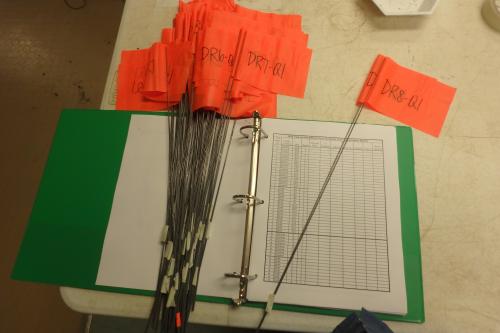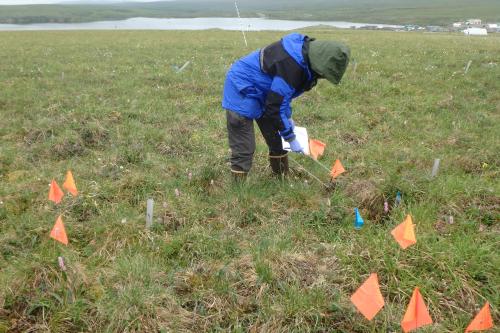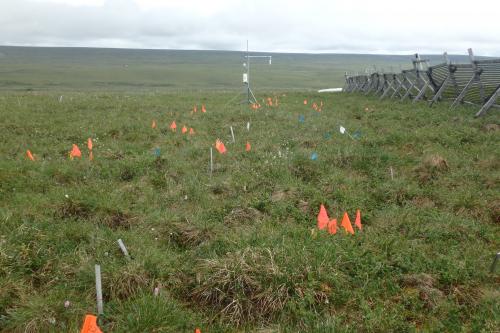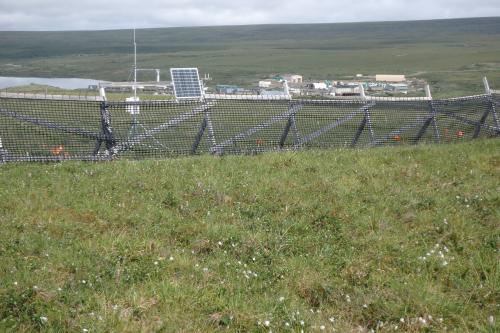July 25, 2018. Today I was able to join Dr. Bret-Harte in the field to mark the specific quadrat locations of the sites that we will be "plucking," or collecting, next week.
The TussockA plant community that forms a clump. In the Arctic, the tussocks are equal parts graminoids (sedges and grasses), moss and shrubs. Snowfence Study began in 2006. In the Arctic, it appears that a widespread shift from tundra to deciduous shrub vegetation is occurring. This shift in vegetation is an important change in the ecosystem. This shift can alter exchanges of energy, with sunlight being the origin, water, and elements such as nitrogen (N) and carbon (C) between soil, plants, and air.
In 2006, Dr. Bret-Harte injected the soil with 15N, which can be used as a tracer to follow the cycle of Nitrogen. Basically, the atomic weight of Nitrogen (N) is 14 meaning there are 14 protons and neutrons. The one extra neutron creates a slight increase in the mass, which is traceable in a mass spectrometer. Honestly, I am still wrapping my head around it, but basically, an easy way to think about that extra neutron would be if you painted one N atom blue, you would be able to see it in a sea of red atoms.
This project is looking at 48 quadrats, or plots of earth, for shifts in the vegetation. Twenty-four of the quadrats are located on the south side of the snowfence because the wind here comes from the south. The other twenty four quadrats are on the north side of the fence.
This morning in the lab, I labelled flags to mark the specific quadrats that will be observed for this study. 
In the afternoon, Dr. Bret-Harte and I went into the field and marked the sites of the study. The study site is located on a hill south of Toolik. There is a meandering boardwalk that leads close to the site. After the boardwalk, we had to navigate the tussocks and tundra landscape, which is easier said than done.

After a few hours, all 48 sites were tagged with flags. It was a warm day and the mosquitoes were relentless. Thankfully, both of us were wearing the official outfit of the arctic tundra, a mosquito shirt and Xtratufs (boots that come up over your pant legs.) Dr. Bret-Harte is modeling the outfit in the above photo.




Comments